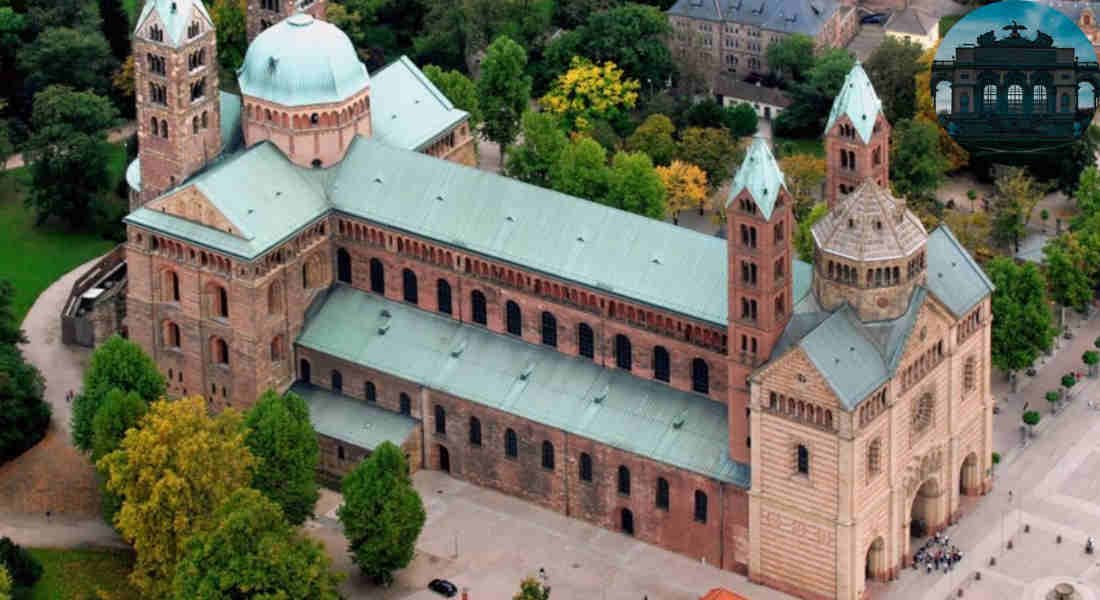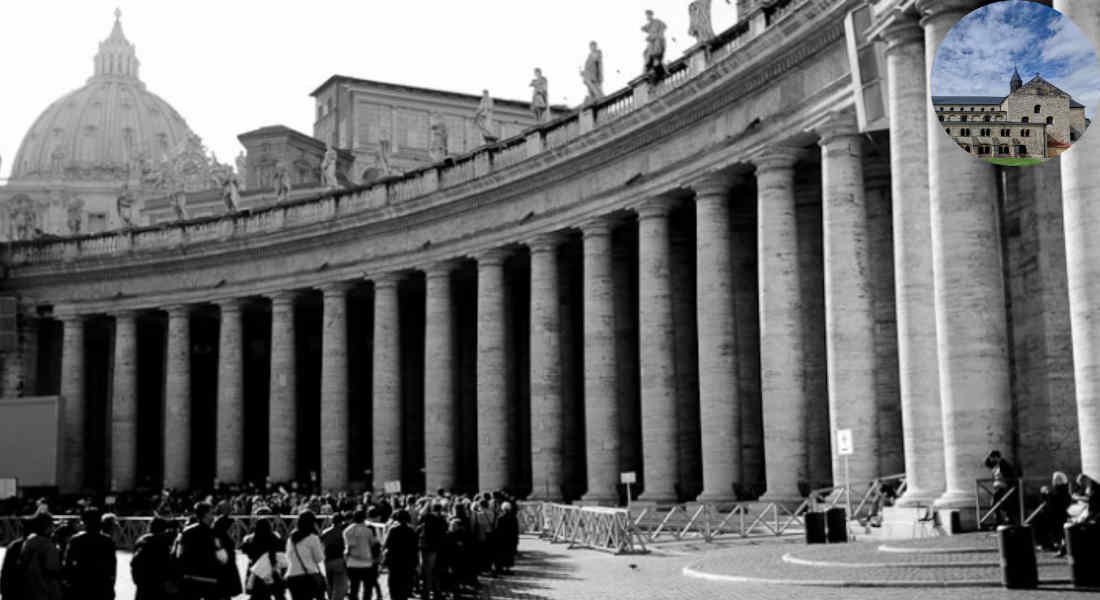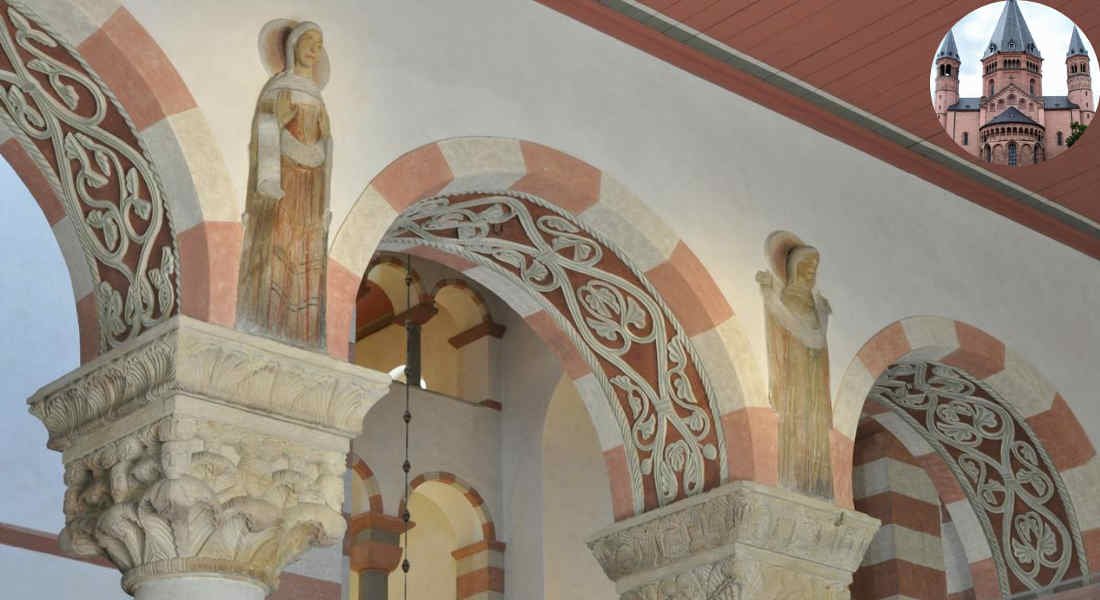Ottonian architecture, flourishing during the 10th to 11th centuries, represents a significant period in medieval European history. This architectural style is characterized by its distinctive blend of influences from earlier traditions, including the Carolingian, Romanesque, and Byzantine styles. Among the various elements that define Ottonian architecture, arcades stand out as a prominent feature, offering both structural and aesthetic contributions.
Understanding Ottonian Architecture

Origins and Historical Background
The Ottonian dynasty, named after its first emperor, Otto I, played a crucial role in the revival of art and architecture in medieval Europe. Emerging in Germany, this dynasty helped unite various territories and promote cultural exchange. The Ottonian period is often regarded as a continuation of the Carolingian Renaissance, marked by a renewed interest in classical forms and Christian themes.
Key Influences
Ottonian architecture is heavily influenced by:
- Carolingian Architecture: This style introduced a sense of monumental scale and symmetry.
- Romanesque Elements: Characterized by rounded arches and robust structures.
- Byzantine Aesthetics: Notable for its elaborate mosaics and decorative details.
Main Characteristics
The main characteristics of Ottonian architecture include:
- Sturdy stone structures: Designed for durability and permanence.
- Symmetry: A hallmark of classical design that conveys harmony.
- Monumental scale: Reflecting the power of the church and state.
The construction of churches and palaces during this era was often sponsored by religious and royal commissions, leading to remarkable architectural achievements.
What is the Arcade in Ottonian Architecture?

Definition
An arcade is defined as a series of arches supported by columns or piers. In Ottonian architecture, arcades serve both functional and decorative purposes, creating visually appealing spaces while providing structural support.
Visual and Structural Significance
Arcades are vital in Ottonian buildings for:
- Providing rhythmic beauty to facades.
- Allowing for larger interior spaces enhances the viewer’s experience.
You may also read (benefits of choosing architectural shingles for your home).
Differences from Other Architectural Elements
While other elements, such as vaults and buttresses, serve specific structural purposes, arcades primarily focus on visual impact and spatial organization. They create a sense of flow and connection between different areas within a building.
In this section, we have examined what the arcade is in Ottonian architecture, establishing its importance in both aesthetic and functional contexts.
Key Features of Ottonian Arcades
Semicircular Arches
The standard design for Ottonian arcades features semicircular arches. Occasionally, you may encounter pointed or flat arches, but the rounded design is the predominant one.
Alternating Support Systems
One of the striking characteristics of Ottonian arcades is the alternation of columns and piers. This creates a rhythmic visual effect, drawing the eye along the arcade and enhancing the overall design.
Decorative Elements
Arcades often feature decorative moldings, carvings, and intricate stonework on both arches and columns. These artistic details contribute to the grandeur of the structures and reflect the craftsmanship of the era.
Proportion, Repetition, and Symmetry
The design of Ottonian arcades emphasizes proportion, repetition, and symmetry, creating a harmonious aesthetic that enhances the viewer’s experience.
Common Materials
Typically, materials used in the construction of arcades include:
- Stone: For durability and a robust appearance.
- Brick: Occasionally used for decorative accents.
Types of Arcades in Ottonian Architecture

Ottonian architecture showcases several types of arcades, each serving distinct functions:
Type of ArcadeDescriptionFunction
Blind Arcades Decorative elements that do not open onto another space. Primarily for aesthetic appeal.
Open Arcades Functional arcades that create passageways or galleries. Facilitate movement and access.
Arcades with Alternating Supports: Alternating columns and piers create a rhythmic effect. Structural support with visual interest.
Intersecting Arcades Complex patterns that enhance visual appeal. Add depth and intricacy to the design.
Functional Roles of Arcades in Ottonian Buildings
Structural Support
Arcades play a crucial role in distributing weight, enabling the construction of larger and taller interiors. This structural support allows for expansive spaces that can accommodate gatherings and worship.
Creating Open Spaces
Arcades contribute to the creation of well-lit, open spaces, enhancing the atmosphere within churches and public buildings. The interplay of light and shadow through the arches can create a serene environment.
Facilitating Movement
The presence of arcades often results in covered walkways, aisles, and cloisters, which facilitate movement between different areas of a building. This design feature is significant in large ecclesiastical structures.
Enhancing Acoustics
In addition to their structural purposes, arcades also improve the acoustics within spaces, allowing sound to travel effectively, which is essential for worship and ceremonies.
Aesthetic and Symbolic Importance

Symbols of Power and Faith
Arcades serve as symbols of power, faith, and artistic expression. They reflect the authority of the church and the state, embodying the cultural aspirations of the Ottonian dynasty.
Rhythm and Grandeur
The rhythmic nature of arcades contributes to a sense of harmony and grandeur in architectural spaces. This design element is crucial for creating an inviting and majestic atmosphere.
You may also read (how do i remove the flow restrictor from my home delta faucet).
Spiritual Symbolism
In religious contexts, arcades represent the connection between earth and heaven. Their arching forms can symbolize the divine, enhancing the spiritual experience of worshippers.
Overall Beauty and Complexity
The incorporation of arcades adds to the overall beauty and complexity of Ottonian interiors, making them not only functional but also visually stunning.
Notable Examples of Ottonian Arcades
St. Michael’s Church, Hildesheim
This church features rounded arches, alternating supports, and intricate decorative details, showcasing the hallmark characteristics of Ottonian arcades.
St. Cyriakus Church, Gernrode
Known for its open arcades, this church exhibits a rhythmic arrangement in the nave and aisles, enhancing the flow of movement.
Corvey Abbey
Corvey Abbey is renowned for its intricately carved stone arcades within the network, which showcase the craftsmanship of the Ottonian period.
Cluny Abbey
Although primarily associated with the Romanesque style, Cluny Abbey’s cloister arcades were influenced by Ottonian design principles, reflecting the style’s reach.
Arcades in Ottonian Home Design Today
Historical Inspiration
The principles of Ottonian arcades continue to inspire modern home design. Their emphasis on arches, columns, and open spaces resonates with contemporary architectural trends.
Adaptation in Modern Interiors
Many modern residential designs incorporate Ottonian elements, such as:
- Arches: Used to define spaces.
- Columns: Providing structural support and aesthetic appeal.
Tips for Incorporation
To incorporate arcade-inspired elements into your home design:
- Use arched doorways and windows.
- Create open spaces that promote light and airflow.
Benefits of Arcade Features
Incorporating arcades can enhance your home by providing the following:
- Natural light
- Visual rhythm
- A sense of grandeur in design.
Step-by-Step Guide: Bringing Ottonian Arcades into Your Home
Assessing Space and Structure
Before installing arcade features, assess your space and existing structure. Consider how these elements will integrate with your home’s overall design.
Choosing Materials and Finishes
Select materials that align with the Ottonian aesthetic, such as:
- Stone for an authentic look.
- Brick for decorative accents.
Deciding on Arcade Type
Choose the type of arcade that best fits your vision:
- Blind arcades for decorative purposes.
- Open arcades for functional spaces.
Working with Professionals
Engage architects or designers familiar with historical styles to ensure authenticity and proper implementation of your ideas.
Integrating Other Features
Consider integrating arcades with other Ottonian features, such as vaults, triforia, and tribunes, to create a cohesive design.
Maintenance Tips
To preserve your arcade features:
- Regularly check for structural integrity.
- Clean and maintain decorative elements to keep them looking fresh and new.
You may also read (what does house architecture really mean).
